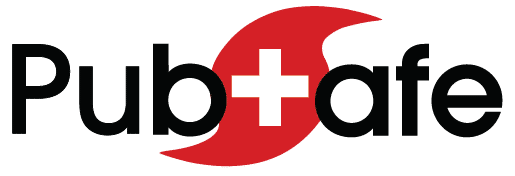PubSafe User Security
This security information describes the general steps to secure customer data. Some information is limited to avoid exposing information that hackers would find beneficial. Click this link to view our privacy policy and terms of use.
PubSafe has implemented several layers of security to make it progressively harder to access confidential information. Unfortunately, major corporations and our government have shown that even advanced security is often not enough. With cloud-based systems, not directly connected to a user’s email or network, there is less likelihood of injecting a virus, however, cyber security threats continue to evolve. PubSafe pledges to maintain commercially accepted standards in addition to other cyber defense steps implemented to protect user data.
User Security Options
Users are provided multiple options to choose when and how to share their information with other PubSafe users. A user can be completely “invisible” to the PubSafe community or visible at designated times. READ MORE about visibility.
Android and iOS as not identical. Apple is currently blocking updates on their platform which prevents providing all the newest security functionality. We therefore recommend Android until Apple changes their position.
App Security Options
- Show or hide phone number
- Share information with active Team or Organization (currently Android only)
- Public profile options
- Facebook login option has been removed
- Sex and age are not shared to other app users, ever
- Transmit rate can be altered
- Visibility after logoff can be altered
- Social media sharing can be disabled
Encryption
PubSafe utilizes Secure Socket Layer (SSL) protocol to encrypt communication between users and servers. Our SSL certificates utilize 2048-bit (ECC) SSL and 256 bit encryption issued by a trusted certification authority.
SSL Technology
Secure Socket Layer (SSL) protocol creates an encrypted connection between users and remote servers. This is accomplished by utilizing SSL certificates purchased yearly from trusted SSL certificate authorities. SSL certificates utilize an 2048-bit encrypted key pair, public and private to accomplish end-to-end encrypted communication. The SSL protocol ensures the encryption key is private, even from the certificate authority (CA).
SSL is a standard security technology for establishing an encrypted link between a server and a client. Typically this connection is a web server and a browser, mobile app, or email client. It is also known as TLS or Transport Layer Security.
Data Center & Storage
PubSafe systems are hosted in co-located data centers that are SSAE-16, SOC1, and SOC2 certified with HIPAA and PCI compliant services. Standard security measures such as DDoS Protection, firewalls, and SSL/TLS are utilized.
Operating System
PubSafe uses Linux as the operating systems for all servers. Linux utilizes security models specified by the US NSA (National Security Agency). Linux is not controlled or distributed under a commercial user license. This means there is not a company or organization that can access our software or systems without administrator knowledge. Companies that commercially develop and distribute operating systems have the ability to install or uninstall system components without the knowledge or permission of system administrators. This “back-door” access does not exist in a Linux environment.
Network Configuration
All of our servers operate on a private network, behind an industry standard hardware firewall in each of our co-locations. Our firewalls utilize standard technologies specified by the US Department of Commerce National Institute of Standards and Technology. This includes, but is not limited to packet filtering, application-proxy gateways, virtual private networking, network access control, web-application firewalls and firewalls for virtual infrastructures.
Third Party Organizations
For a complete description of third-party organization access to data please see the complete privacy policy and terms of use. Data shared with third parties takes place through API calls utilizing the SSL/TLS encryption protocol. All API access is controlled utilizing token-based authentication.
Backup and Recovery
All data backups take place through virtual private networks. This ensures data isn’t exposed to the open internet during transfer. Backup data is stored in a different co-location than production servers operate on.
